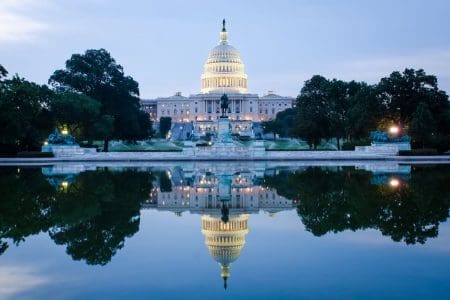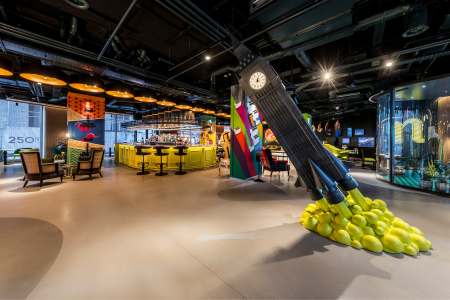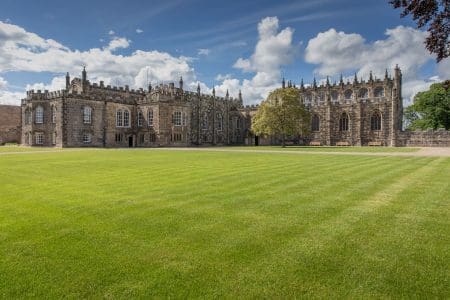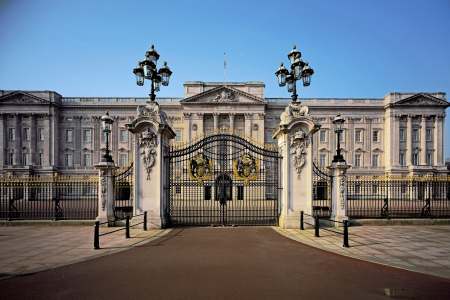It was 1979, and the future was looking somewhat chilly for English country houses. The Labour Government’s ‘Winter of Discontent’ with the unions had left its mark, another energy crisis was unfolding, and the threat of a Wealth Tax had not entirely gone away. The finances of many owners of great houses were precarious.
Into this unpromising scenario stepped Tim Hart, city investment banker, and his wife Stefa, an interior designer. For the sum of £110,000 (several million in today’s prices) they bought Hambleton Hall, a Victorian country house with 15 bedrooms near Oakham, and, defying the economic problems of the time, spent another £400,000 in transforming it into a luxury hotel in the heart of the beautiful Rutland countryside.
The couple had a very clear vision of the sort of hotel they wanted – homely, comfortable, with stylish interiors, plus committed and enthusiastic staff. Their restaurant would take centre stage – as foodies they were inspired by their visits to ‘great temples of gastronomy’ in France, often visiting the kitchens afterwards, and were determined to emulate those places.
Hambleton Hall History
Hambleton Hall duly opened as a hotel in 1980, and that vision of the Harts quickly became a reality and remains so over four decades later. It has the classic country house feel of Edwardian times, with a warm, welcoming atmosphere. And as for the cooking, well, it has the remarkable – indeed unique – record of possessing a Michelin star for every year since 1982. The hotel is designated four-star Red (for extra quality) by the AA.
The house has a rich history which only adds to its attraction of the visit. It began life in 1881 as a hunting lodge, built by the shipping and brewing millionaire Walter Gore Marshall. It soon became a popular base for his society friends to join him in his love of hunting, with regular participation in the nearby Cottesmore, Quorn and Belvoir hunts. Walter was unmarried so when he died Hambleton Hall was inherited by his equally gregarious sister, Eva Astley Cooper.
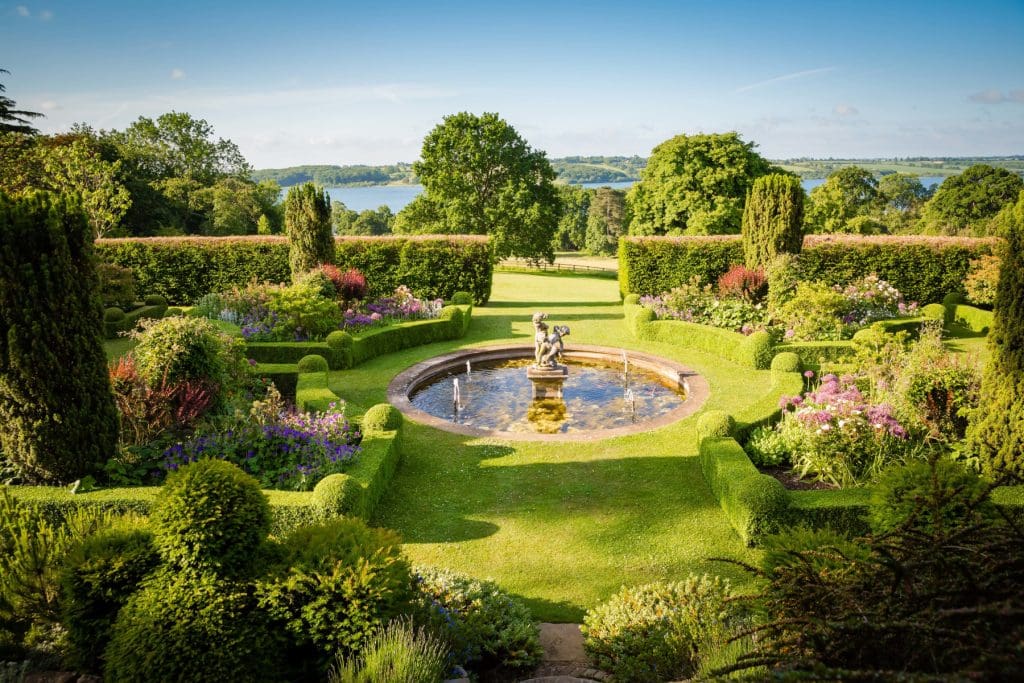
Noel Coward and Hambleton Hall Hospital
Now the eccentric Eva ushered in Hambleton’s Golden Age, presiding over raffish gatherings of such bright young things as Noel Coward, conductor and composer Malcolm Sargeant, writer and translator Charles Scott Moncrieff and painter Philip Streatfield. Could the hotel’s motto, carved in stone above the front door – Fay Ce Que Voudras (Do What You Want) – originate from the relaxed environment of that time?
Coward in particular enjoyed his many visits to Hambleton, and legend has it that he wrote one of greatest plays here, Hay Fever, an effervescent comedy of bad manners set – naturally – in a country house.
Eva gave over her house to the national cause in WW1 and WW2. In the former Hambleton Hall was turned into one of 3,000 auxiliary hospitals run by the Red Cross for convalescing servicemen. In the latter the extensive stables provided accommodation for 60-70 Land Girls who were replacing Rutland’s male farmworkers departed to the frontline, while German and Italian prisoners of wars worked in the grounds.
After Eva’s death in 1944, subsequent owners were Lord Trent (previously James Boot, of the famous pharmaceutical retailer), a Dr Brockbank and a Major and Mrs Hoare. Then came the Harts, who soon joined Relais and Chateaux as one of its first UK member hotels, and under Nick Gill – brother of the late restaurant critic A A Gill – turned Hambleton into a fine dining destination.
Dining at Hambleton Hall
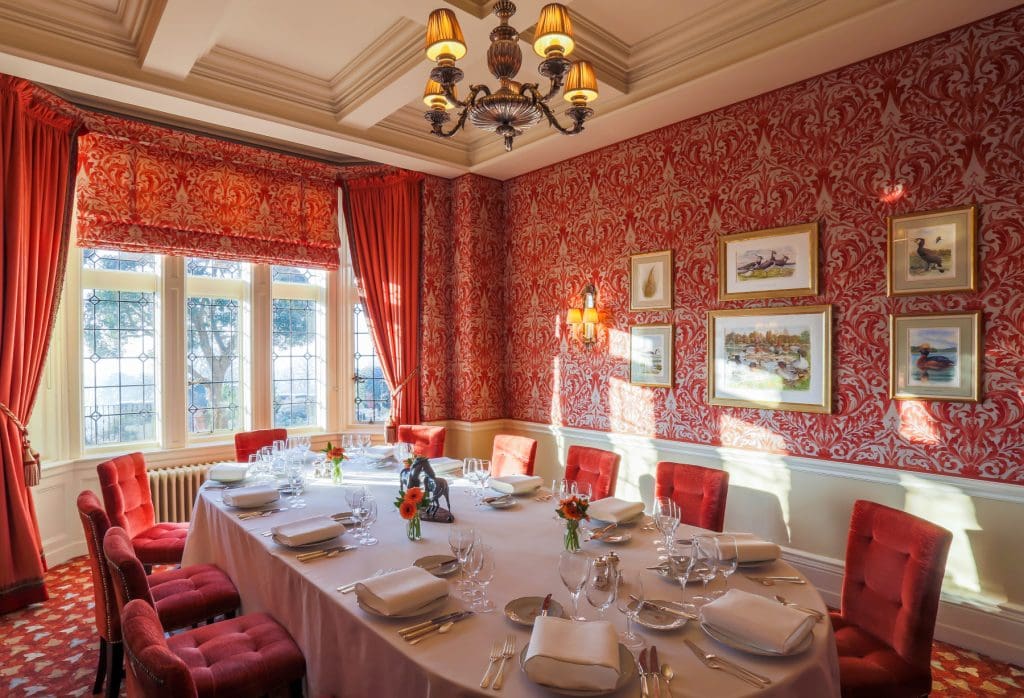
So it was with great anticipation that we took our seats in the dining-room at 8pm on the evening of our stay. A bottle of Greywacke Sauvignon Blanc was soon at our table (recommended by Tim), and it proved delicious, beautifully ripe, with rounded fruit, fine balance and a soft finish. We were glad to have the suggestion, as there are over 400 wines on the list to choose from.
As for the food, it was superb. Our choice was a starter from the vegetarian menu, cauliflower cheese with spiced lentils and summer truffle, followed by poached fillet of turbot with pumpkin gnocchi, chanterelle mushrooms and pumpkin veloute. For desert we went for the farmhouse cheese board, wheeled in and then described in expert detail by our waitress.
Hambleton has its own kitchen garden, and Chef Director Aaron Patterson has a long-standing network of small local suppliers for lamb, beef and pork. But the hotel takes fish daily from Devon as well as east coast ports, and some fruit and vegetables come from as far away as the Rungis International Market in Paris.
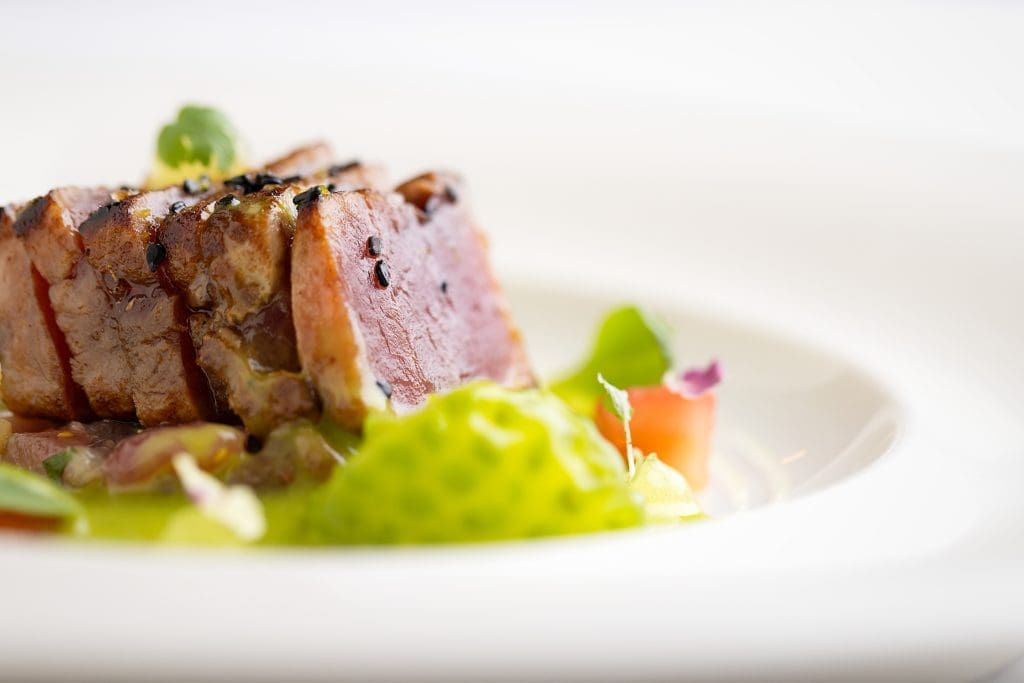
Before our meal Tim gave us a quick guided tour of Hambleton’s impressive and huge kitchen, which is divided into five clear sections for different aspects of the cooking process. Our recent view of a restaurant kitchen had come from the gripping BBC drama ‘Boiling Point’ (adapted from the film of the same name), where inexperienced staff and personal rivalries meant shouting, accidents and sheer chaos was never far away.
Here though, in the real world, under that evening’s leadership of Head Chefs James Stone and Charlie Jones (like many at Hambleton a long-time employee, with 19 years’ service), all was ordered and calm. The comparative silence was interrupted only by occasional murmurs of communication as the kitchen staff – mainly men with beards, it appeared – boiled, carved, diced and prepared the food on a host of gleaming silver surfaces, while a couple of waitresses patiently anticipated the completed plates.
Hambleton Hall Breakfast & Art
At breakfast the following morning we were placed in a different corner of the dining-room, where we were delighted to see an outstanding collection of watercolours on the rusty red damask-laden walls. Delighted because we immediately identified them as having the stamp of an old friend of ours, Ben Perkins, ornithologist, botanist and master painter, who sadly died last year. Stefa had commissioned Ben to paint some of the ducks and birds that can be found on the stunning expanse of Rutland Water, just yards away beyond the garden at Hambleton.
Hambleton’s artwork is outstanding. There are plenty of hunting scenes on the stairs to the first floor – as befits the house’s heritage – and some delightful animal paintings which have a touch of Landseer about them. The walls of the main dining room have some intriguing portraits, mainly, it seemed, of formidable looking aristocratic ladies from a bygone age. Also scattered around the hotel are sculptures of wild animals, a panther here, a group of hippos there.
Rutland Water
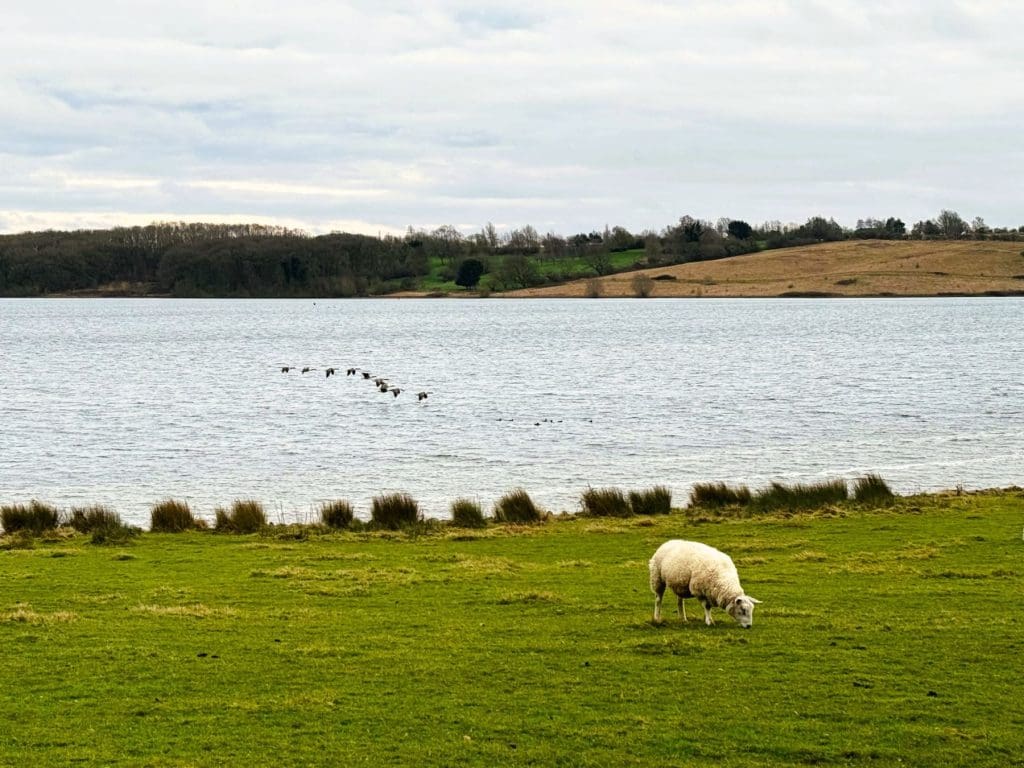
The hippos might like Rutland Water, the largest reservoir in England which provides water to the East Midlands as its main function, but which has become home to a splendid nature and bird reserve and also hosts a number of water sports.
Back in the mid-70s when the Gwash valley was flooded to make way for the reservoir, many locals were unhappy at the loss of prime agricultural land. The inhabitants of Nether Hambleton faced losing their homes and their livelihoods. But as time has passed the beautiful, crystal clear Rutland Water has been accepted as a local asset and a tourist attraction.
Armed with the hotel’s specially designed walking map, we took the South Shore Walk (5 kilometres, one hour) around the reservoir. To get to the water took just five minutes, walking south first through Hambleton’s beautifully-manicured and flower-filled terrace garden, and then further on down through a field inhabited by a flock of sheep, curious but unperturbed by our presence.
It had been a bitterly cold week but on that crisp afternoon a brilliant sun was out, as was a lone muntjac who we spotted through the trees, slaking his thirst at the waterside. Dog walkers, joggers, cyclists abounded on our stroll, all revelling in the break in the bad weather.
Our Room at Hambleton Hall
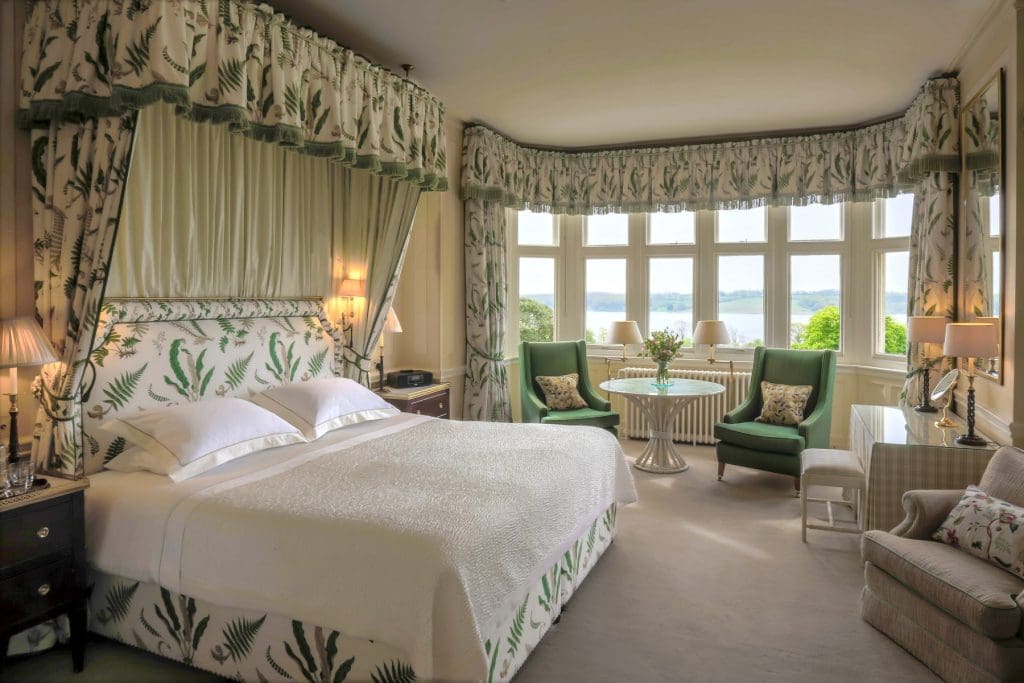
We had taken the walk prior to checking into our room, so as the sun began to dip in late afternoon we were keen to get inside and enjoy its warmth and comforts. We had been allocated the intermediate sized Blue Room on the first floor, across the corridor from the Noel Coward suite.
The large bay window gave us spectacular views out over the hotel gardens and down to Rutland Water. The marbled floor bathroom contained a wonderful, deep bath, ideal for a long, hot soak after that walk in the cold. The king-sized bed was very comfortable and a real sleep-inducer. A silver box by the bedside containing homemade biscuits was an extra treat.
Hambleton Hall has built its reputation on the old-fashioned virtues of the classic English country house – not for it the modern-day obligatory add-ons, it seems, of spa, or cookery school, although there is an outdoor swimming pool for summer months and a tennis court.
Wansford
Admittedly it was a fleeting visit, off-season, but Rutland (England’s smallest county) and the surrounding region seems relatively unspoilt. En route from Suffolk we drove off the A1 into the pleasant village of Wansford (in Cambridgeshire), enjoying lunch among the residents and their well-behaved dogs at the Thirteen Café and Bar. A longer stay at Hambleton and we would certainly have headed to one of the plethora of other historic houses and castles within a half hour or so radius – Burghley House (home of the Cecils), Grimsthorpe Castle, and Althorp (the Spencers).
But it had been a delightful visit. Hambleton Hall certainly pays homage to its Victorian and Edwardian roots, but its longevity and popularity proves how skilfully and successfully it has adapted to the 21st century.
Hambleton Hall Hotel
For more information on Hambleton Hall hotel, or to make a booking, click here.
